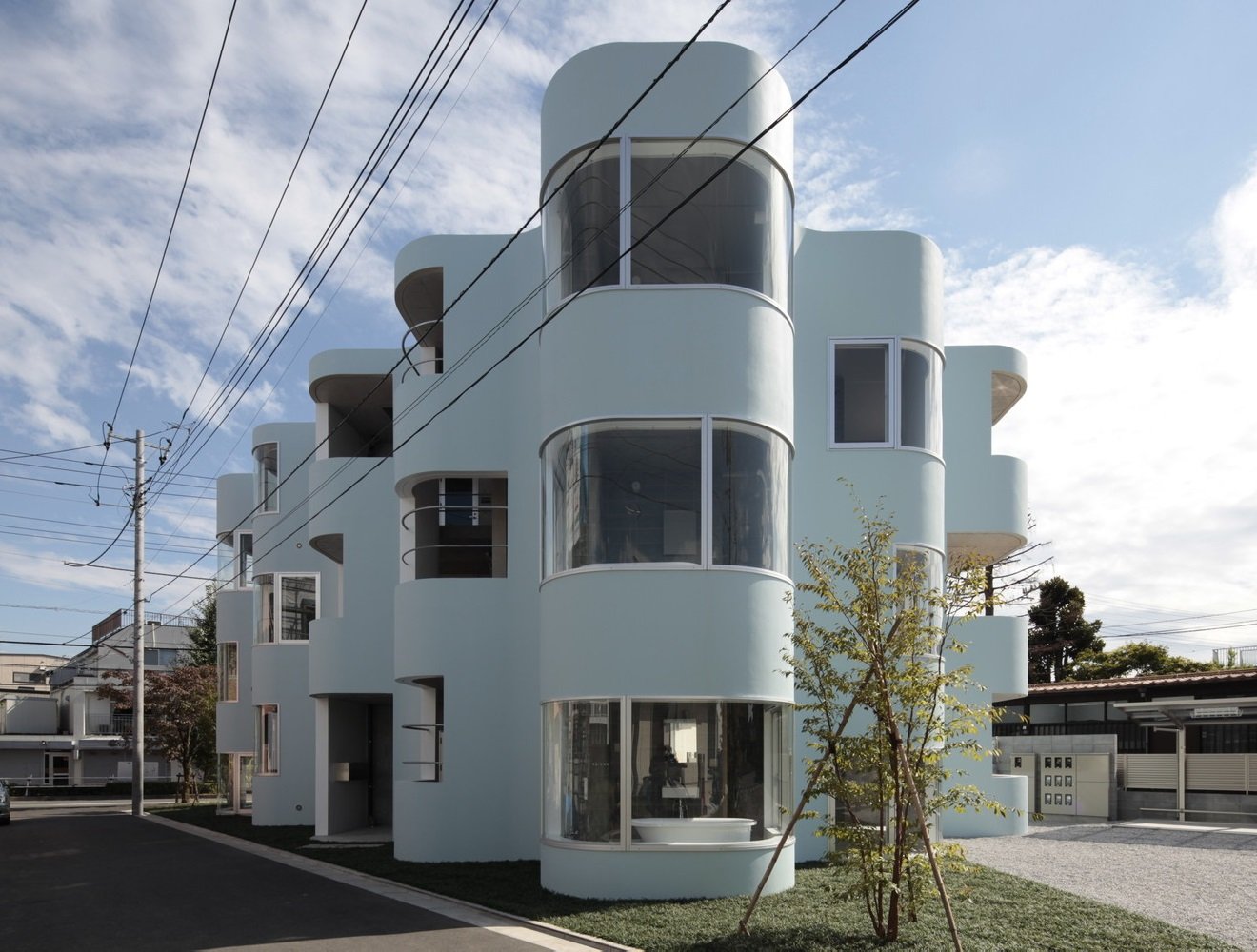#11713. White Modular Facade with Cylindrical Elements

The building presented is a striking example of modern Japanese architecture, embodying the principles of metabolism and organic plasticity of forms. The facade is executed in a minimalist white color, giving the structure visual lightness and purity of lines, despite its significant volume.
Particular attention is drawn to the cylindrical facade elements with panoramic glazing, which create a dynamic composition. These rounded volumes protrude from the main body of the building, forming an interesting rhythm and plasticity. The large curved windows not only provide maximum natural lighting to the interior spaces but also visually soften the geometry of the building.
The facade is organized according to the principle of modularity — repeating elements of different sizes are combined into a complex yet harmonious composition. The architect masterfully works with proportions, creating a balance between large and small details. The absence of obvious decorative elements is compensated by the plasticity of the volumes themselves, where form becomes the main expressive means.
For private housing construction, several techniques can be borrowed from this project: the use of rounded corners to soften the geometry of the facade; panoramic glazing of curvilinear form; playing with protruding and recessed volumes; monochrome color scheme that emphasizes architectural forms. Even in a small private home, these techniques will help create a modern, dynamic appearance.